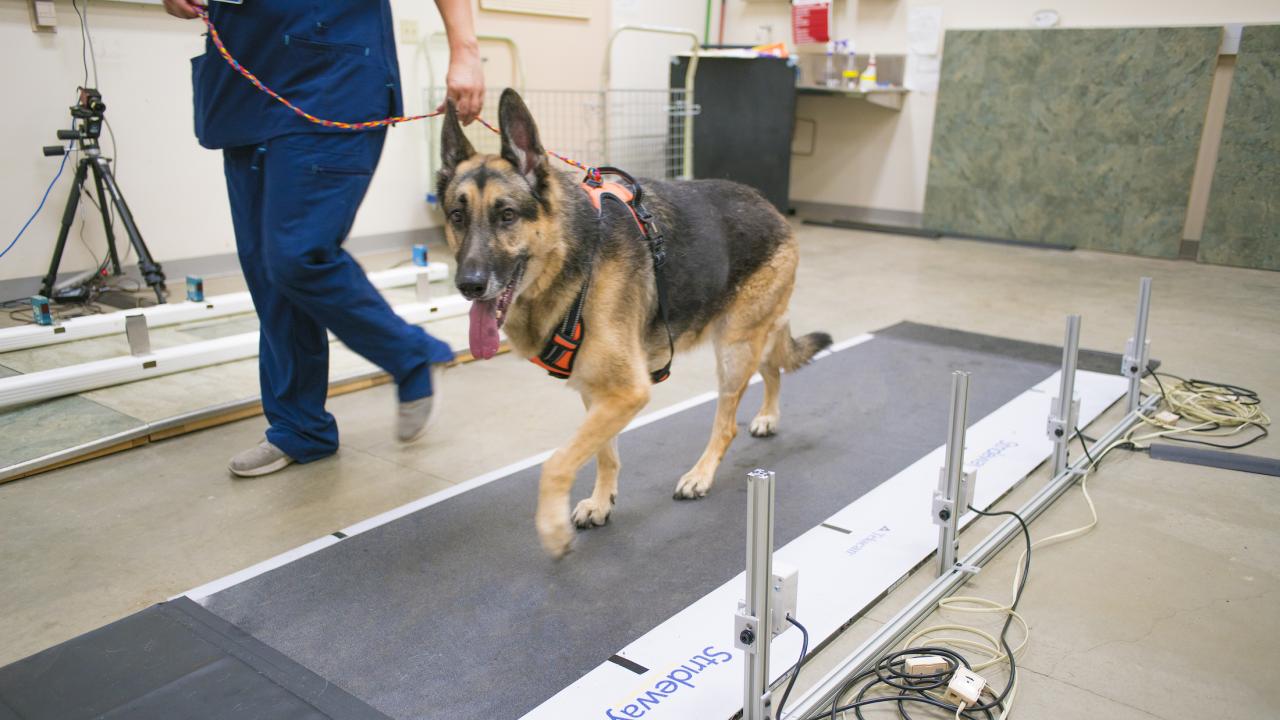
Teamwork Makes the Dream Work
From the CCAH Update Fall 2021 issue
Make no bones about it, the researchers at the UC Davis J.D. Wheat Veterinary Orthopedic Research Laboratory (VORL) are a team. They’re the first to point out that the collaborative environment, along with help from supporters like the CCAH, are key to translating science to improved patient care.
VORL provides technical support, equipment, and training for anyone interested in musculoskeletal research. From examining new ways to repair fractures in the notoriously brittle bones of rabbits to 3-D printing canine jawbones, researchers identify situations where the success rates are less than ideal in the clinic and work to develop solutions.
“We have a very energetic, collaborative environment where everyone works in teams,” said VORL founder Dr. Susan Stover. “That’s the part I really love.”
Named after a former UC Davis professor of equine surgery, the laboratory’s focus was initially on orthopedic research in horses. The work quickly transcended species and now covers companion animals and exotics. The technology has advanced too. The facility houses a range of systems used for clinical trials, understanding orthopedic diseases, and developing new treatments. Capabilities range from quantifying locomotion, specialized imaging, biomechanical testing, 3-dimensional modeling and manufacturing for surgical planning and artificial parts, to cell and molecular biology.
Through VORL’s more than 25 years of operation, the CCAH - and its donors - have played integral roles in its growth and sustainability. One of the original motivations for establishing VORL was to centralize specialized equipment, an area for which funding is traditionally challenging to obtain. Over the years, support from the CCAH has enabled the purchase of new equipment and software, as well as upgrades and maintenance for existing equipment.
“Without CCAH equipment funding, many of the advances that we have made would have been significantly delayed,” said orthopedic surgeon Dr. Denis Marcellin-Little.
Support from CCAH has also helped with more focused projects for junior researchers and residents, as well as proof-of-concept projects. This has a trickledown effect, providing opportunities for undergraduates and veterinary students to participate in research.
“Most universities don’t have funding mechanisms for residents, so they depend on a faculty member to have funding for their projects,” said orthopedic surgeon Dr. Amy Kapatkin. “We have this advantage of resident training grants that enables UC Davis to jump start residents’ research careers.”
Clinical applications made possible by VORL research include novel ways to treat spinal fractures, enhanced standard of care for repairing mandible fractures, and using CT scans to predict fracture likelihood and optimize treatments in dogs with osteosarcoma.
“What CCAH is doing is a tremendous boost to state-of-the-art technology,” said Marcellin-Little. “When we combine clinical knowledge with basic science, we can really push the envelope in novel ways.”
